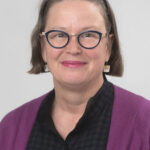
I recently completed 30 years in private practice. Despite my boyish good looks, patients frequently ask whether I’m planning to retire. For many reasons, the answer is no. My retirement plan is still recovering from the crash of 2000, I don’t do well with large blocks of unscheduled time, and my wife says that she married me for better or worse—but not for lunch. Most importantly, I still truly enjoy the practice of rheumatology.
While running a small office has a multitude of hassles, all of that aggravation falls away as soon as I enter the examination room for that one-on-one interaction with a patient. I particularly enjoy new patient consultations, for that is when I must truly use my interviewing skills and diagnostic abilities. I like the fact that I have only an hour to decipher a patient’s history, perform a physical exam, review old records, make a diagnosis, explain my conclusions to the patient, and institute appropriate therapy. I must win the patient’s confidence and show that I know what I’m doing and am entitled to the trust that they place in me. After all, telling a patient that they have a chronic illness and that they need to take medications that can have serious side effects is not easy.
With this brief introduction, let me touch on some specific patient encounters we each face daily in our practices. While some are more rewarding than others, all bring me a sense of professional satisfaction.
Small Ministrations, Big Relief
I love to see gout patients. Perhaps that’s in memory of my late mentor, Gerald Rodnan, MD, who was an international expert on the disease. I have James Gilray’s 1799 print “The Gout” hanging in my office and ask patients if their pain feels like the mythical animal chewing on the bunion joint depicted in Gilray’s drawing. I also like to read to gout patients Sydenham’s classic description from my 1849 edition of Watson’s Lectures on the Principles and Practice of Physic, the general medical text of its day: “Place your toe in a vice and tighten it as much as you can. That gives a sense of rheumatism. Then give the instrument another twist and you will understand gout.”
I use the analogy of a bathtub in which the level of water is determined by whether the tap is too open or the drain is plugged up to explain the origin of hyperuricemia. I was an early advocate of teaching internal medicine residents about gout in the private practice setting. There’s nothing more fun that tapping a joint or olecranon bursa and then showing the resident monosodium urate crystal under polarizing microscopy. Most importantly, I love being able to promise a new patient that, before long, they will be free of their painful gout attacks by taking only a single safe and inexpensive pill per day.
Polymyalgia rheumatica is a diagnosis often missed by the primary care physician. Asking a few pertinent questions, explaining the diagnosis, and assuring a worried older patient that their weeks or months of suffering will likely be gone within a few hours of starting prednisone feels great. Of course, I have to reassure them that this small dose of steroids will not be fraught with a host of side effects. I even ask the polymyalgia rheumatica patients to call in a couple of days just to leave a message that they’re feeling better. I think I feel better, too.
I don’t know about you, but the most common referral to my office is a patient with a positive antinuclear antibody (ANA) test who fears he or she has lupus. While some believe these worried folks take precious time in a busy schedule, I enjoy interrupting the history taking to reassure an anxious patient that more than 95% of patients with a “positive” ANA don’t have lupus and often exhibit no more than a “lab test in search of significance.” Their look of relief is priceless.
I can’t tell you that I always enjoy seeing fibromyalgia patients in consultation. The old adage that you can tell the fibromyalgia patients by the fact that the doctor feels achy and tired within a few minutes of meeting them is often true. However, I like seeing those patients who are willing to accept the concept of a symptom complex that is not a traditional organic disease. I think I have a pretty good spiel about the difference between subjective complaints and objective abnormalities, and the concept of a central pain processing problem related to sleep and mood disturbances. I like that I can educate the patient about the condition and help with their sleep and mood disturbances, but that there must be a great deal of patient responsibility regarding regular exercise, weight loss, and dealing with issues in their life. It is gratifying when some of these patients return to the office feeling better because they have been able to follow through on these recommendations.
Like many physicians, a great part of who I am is what I do. … Having a better than usual round of golf feels good, but it doesn’t compare to hearing the words “I feel so much better. Thank you, Doctor Birnbaum.”
Ultimate Medical Detectives
During my fellowship, Dr. Rodnan and Tom Medsger, MD, always encouraged referral of the most difficult diagnostic dilemmas. I think that many of our physician colleagues view rheumatologists as the ultimate diagnosticians. I can think of no greater satisfaction than making the diagnosis that several other physicians have missed. Whether it’s finding a small patch of psoriasis on a patient with joint pain and negative serologies or identifying urate crystals in a patient referred with “rheumatoid nodules,” I really like being the detective who solves the medical mystery.
Like every other rheumatologist in practice for more than a decade, I remember all too well the days before biologic therapies. While some patients did well on gold, hydroxychloroquine, or methotrexate, far too many did not. Although they took the best agents available, many patients deteriorated despite my efforts. The advent of anti–tumor necrosis factor agents brought a “WOW” factor that many of us had never experienced in treating patients with rheumatoid and other forms of inflammatory arthritis. It’s a great feeling to prescribe a medication that puts a teenager back on the basketball court, allows a dad to play soccer with his kids, and permits a young mother to not only care for her child but also return to her job. While these new agents do not benefit every patient, I feel fortunate to be practicing in the biologic era.
As a rheumatologist, my life is oriented to the office rather than the inpatient setting. I go to the hospital to have lunch in the doctors’ dining room more frequently than to see a patient. Some of my colleagues laughingly ask if I’m lost if they see me near the ICU. However, once in a while I have the opportunity to really make a difference in an acute life-threatening situation. I was recently called by a hospitalist for an urgent consultation in the critical care unit. The patient was a 28-year-old first-year student at an Eastern medical school. She had become ill while visiting her family in San Francisco. After several visits to emergency departments for what was called bronchitis or a viral infection, she had become progressively more short of breath. When she eventually developed hemoptysis, someone finally ordered serologies. It was then clear that she had new onset lupus presenting with pulmonary hemorrhage. Knowing the very guarded prognosis in this setting, I immediately ordered three days of high-dose solumedrol. However, her blood gases did not improve and the chest X-ray looked terrible.
Because of her age and desire to have children, I was reluctant to begin cyclophosphamide. After reviewing the literature, I decided to begin plasmapheresis with oral steroids. I then had to leave town for a couple of days on ACR business. I stopped at the hospital on my way home from the airport. Walking into the ICU, my heart sank when I noted that my patient’s bed was empty. However, I soon learned that she had been transferred to the transitional care unit. I walked down the hall and entered her new room. There was my patient, out of bed and walking without oxygen. I really don’t know who was happiest—the smiling patient, her concerned parents, or her very relieved rheumatologist. I spent the rest of the day in a state of euphoria!
Like many physicians, a great part of who I am is what I do. I derive enormous ego gratification from being a doctor. I am thankful for the respect and gratitude I receive from my colleagues and patients. Having a better-than-usual round of golf feels good, but it doesn’t compare to hearing the words “I feel so much better. Thank you, Doctor Birnbaum.”
Dr. Birnbaum is president of ACR. Contact him via e-mail at [email protected].


